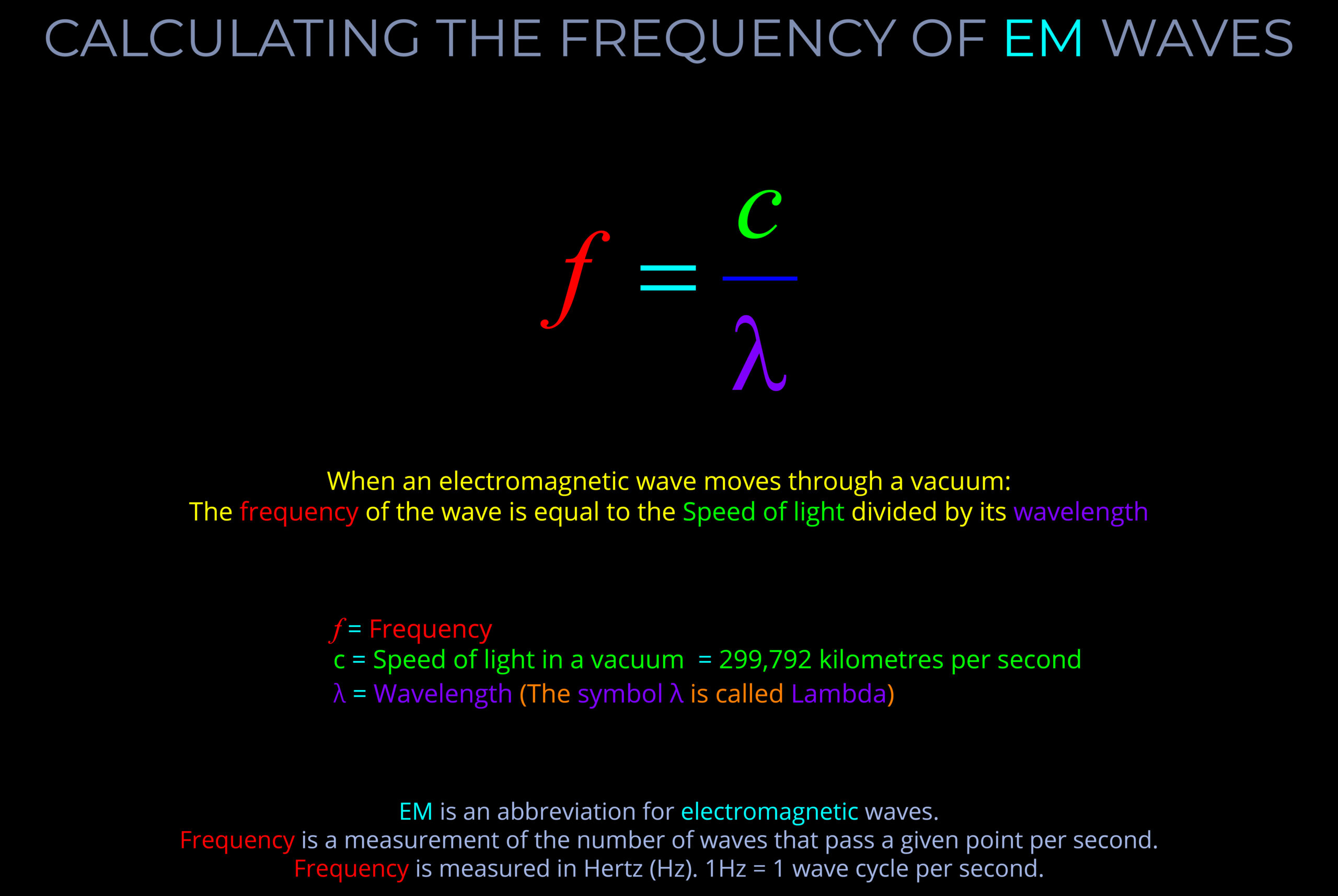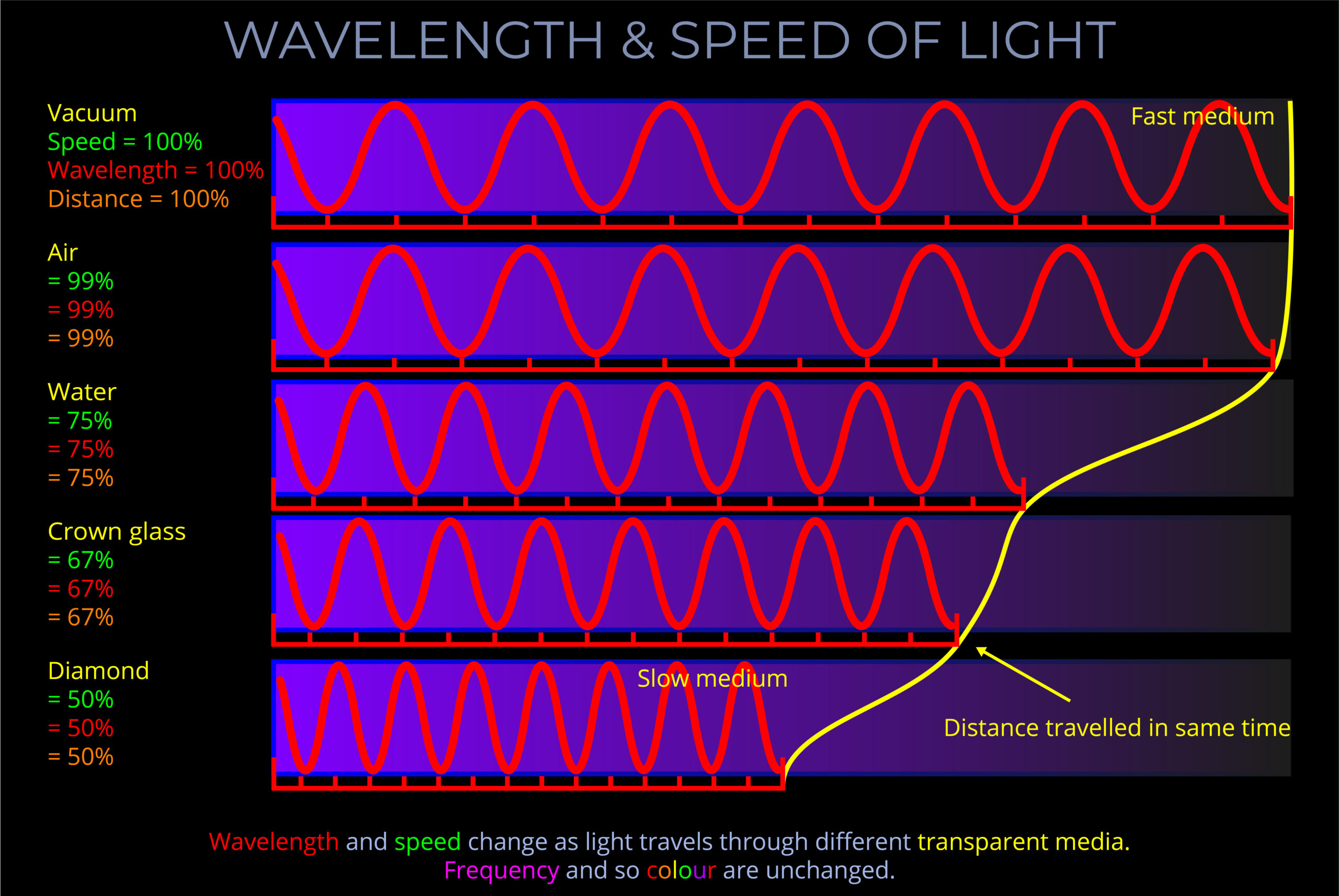A wave is a disturbance that travels through a medium or space, transporting energy from one point to another. Waves can travel through a medium, like waves rippling across a lake, or through space, like the electromagnetic waves that carry sunlight to Earth.
- All waves have shared characteristics such as height (amplitude), peaks (crests), direction of movement, rate of oscillation (frequency), and distance between peaks (wavelength).
- The speed of a wave depends on the medium it travels through. For example, sound waves travel slower through air than through water. In contrast, electromagnetic waves travel at a constant speed (the speed of light) in a vacuum.
- Electromagnetic waves are generally invisible to the human eye, except for the visible spectrum, with wavelengths between approximately 400 and 700 nanometres.
- Beyond this range, whether the wavelengths are longer (as in radio and microwaves) or shorter (as in ultraviolet, X-rays, and gamma rays), our eyes cannot detect them.
- Although we cannot see most electromagnetic waves, we can perceive some of them in other ways. For instance, infrared waves are felt as heat, and electric current (which produces electromagnetic waves) can cause a buzzing sensation in a wire or cause electrocution.
Wavelength & frequency
- The wavelength of electromagnetic waves can vary greatly, from extremely long radio waves, sometimes measured in kilometres, to very short gamma rays, measured in picometers (there are a trillion picometers in a metre (10^12)).
- The frequency of electromagnetic waves can also range from extremely low (1 cycle per second, known as 1 hertz) to extremely high, such as a quadrillion cycles per second, which equals 10^15 hertz (10^15).
About waves in water
- When you throw a stone into a pond, it creates a series of ripples, or waves, that propagate outward in concentric circles until they encounter obstacles.
- Out in the world, waves are generated when forces such as wind and tide disturb the water’s surface.
- The wavelength of a wave in water can be determined by measuring the distance from the crest of one wave to the crest of the next wave.
- The frequency of waves in water can be determined by counting the number of waves that reach their peak or crest at a specific point over a set period of time.
- The amplitude of a wave is often approximated by measuring half the vertical distance from the top of a wave (the crest) to the bottom of a wave (the trough). However, strictly speaking, it should be the distance from the undisturbed surface level of the water to the next crest or trough. This is an approximation because it assumes that waves are symmetrical and that the undisturbed water level is midway between the crest and the trough.
- The direction of travel of water waves can typically be easily determined by observing their movement.
- The energy carried by waves at the beach becomes evident when you experience their force while swimming, for instance, being toppled over by a wave.


